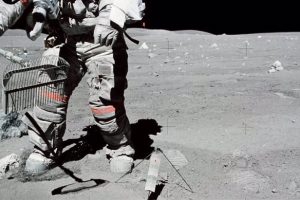South Padre Island, Texas () — SpaceX is now targeting next Thursday as the date to try again to launch the Starship, the most powerful rocket ever built.
Starship was grounded on its South Texas launch pad early Monday morning due to a technical issue, delaying the vehicle’s historic first launch attempt.
SpaceX will have a launch window this Thursday that opens at 8:28 a.m. CT (9:28 a.m. Miami time) and closes at 9:30 a.m. CT (10:30 a.m. Miami time). The company will broadcast the launch attempt live on its websiteapproximately 45 minutes before takeoff.
The massive Super Heavy rocket booster, housing 33 engines, was expected to rumble to life on Monday and launch the Starship spacecraft off its ground platform, which sits inside the SpaceX facility on the South Texas coast, to raise the vehicle above the Gulf of Mexico.
But the launch was canceled due to what the SpaceX broadcast said was a pressurization issue.
“A pressurizing valve appears to be frozen so unless it starts working soon, there is no launch today,” tweeted SpaceX CEO Elon Musk.
The team continued to execute some launch operations and kept the countdown running in a practice known as “wet dress rehearsal” even after making the decision to cancel the launch attempt. Finally, they stopped the countdown clock with 40 seconds left.
If the company had gone ahead with liftoff, mission controllers would give the rocket a final “thump” for launch in T-30 seconds, according to SpaceX Principal Integration Engineer John Insprucker.
It’s common for first-time releases to be delayed as engineers fix issues that may not have been apparent during prior testing.
NASA’s Space Launch System rocket, for example, underwent four attempts to complete a wet dress test and two launch attempts before the vehicle finally lifted off in November 2022.
Starship’s mission
When launch occurs, the Super Heavy booster is expected to expend its fuel about two and a half minutes after liftoff and separate from the Starship spacecraft, leaving the booster to discard in the ocean. The Starship will use its own engines, running for more than six minutes, to propel itself at near-orbital speeds.
The rover will then complete nearly one full orbit of the planet and re-enter Earth’s atmosphere near Hawaii. The spacecraft is expected to touch down off the coast about an hour and a half after liftoff.
The test flight comes after years of explosive tests, regulatory hurdles and public hype from SpaceX CEO Elon Musk.
In the run-up to liftoff on Monday, Musk tried to temper expectations, saying: “Success is not what you should expect. … That would be crazy.”
He added that if the Super Heavy booster were to explode on the launch pad, it could melt the steel infrastructure around it, and SpaceX would have to spend a few months rebuilding the launch site.
“If we get far enough from the launchpad before something goes wrong, then I think I would call it a success,” Musk said during a “Spaces” event on Twitter on Sunday. “Just don’t exploit the platform.”











![[Img #74148]](https://thelatestnews.world/wp-content/uploads/2024/10/Street-lights-that-get-their-electricity-from-traffic-vibrations-300x200.jpg)
